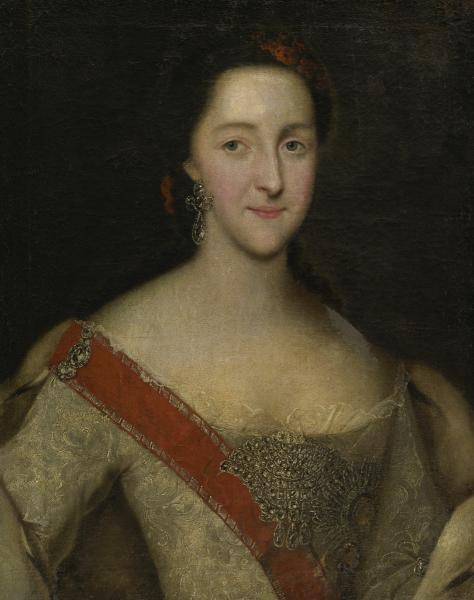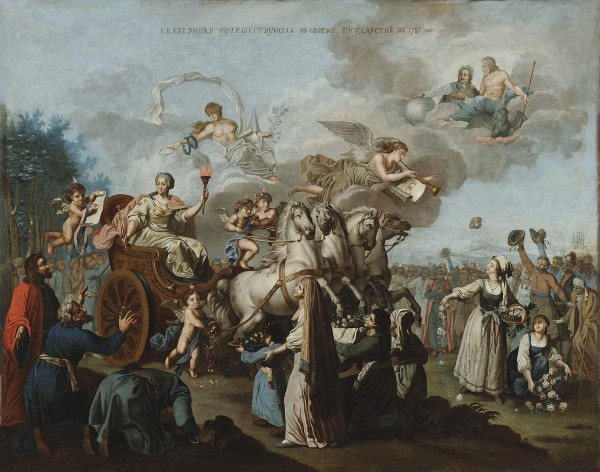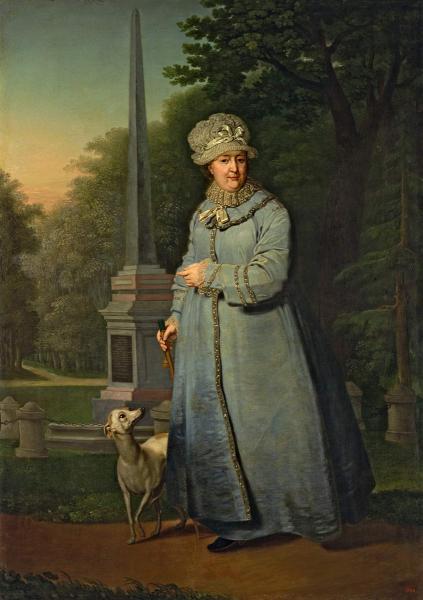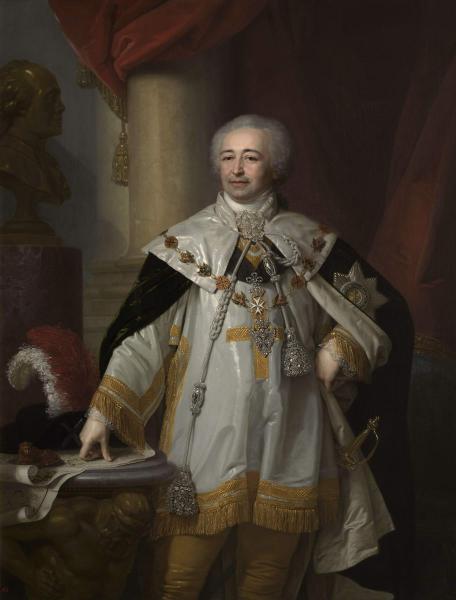The artist is a thunder

Grand Duchess Ekaterina Alekseevna-German Princess Sofia Augustus Frederick Angalt Tserbst (April 21/May 2, 1729, Stettin-November 6/17, 1796, St. Petersburg), from 1762-Russian Empress Ekaterina II Great. The daughter of Prince Christian Augusta Cerbst-Dornburg and Johanna Elizabeth, Princess Golstein-Gottorp. From 1742 the wife of Grand Duke Peter Fedorovich. Came to power in 1762 as a result of the palace coup. Reigned from June 28 /July 9, 1762 to 6/17 November, 1796.
The 400th anniversary of the Romanov house. SPb, 2013.
Depicted with the Order of St. Catherine of the Big Cross (tape and star).
1980 is not dated in the catalog. Dates from the cover of the dress and the shape of the hairstyle. L. AND. Markina and a. AT. Selivanov believes that this portrait is a copy from the original g.-To. Groot
+ About the restoration of the work
– Hide the text about restoration
The state of safety before restoration:
The weakening of the tension of the canvas due to the dilapidated edges led to sagging and the emergence of significant deformations of the basis. Tough breaks on the prints of the subframe planks appeared around the perimeter. Hard soil craquelure with raised edges provoked the appearance of scree. Old restoration masticians lay above the level of author’s painting and created an uneven surface. The connection of the colorful layer and soil with the base was broken, as a result of which numerous loss of a colorful layer appeared, especially around the edges. The lacquer film darkened and lost transparency due to decomposition, this made it difficult to perceive the image.
Complex of the events:
A deep strengthening of a colorful layer and soil was carried out, which made it possible to restore the connection between all layers of the picture, as well as eliminate deformations, put fractures and craquelure in a plane. Bastards of the foundation were covered. In order to carry out sufficient tension of the canvas, restoration edges were brought along the perimeter to the picture. The picture is stretched over the subframe, surface contamination from painting is removed. Drowning and alignment of the varnish film made it possible to return the author’s color to the picture, late entries were deleted in parallel. The old restoration mastic, lying above the level of the author’s layer, were leveled, and restoration soil is laid to the places of loss. At the final stage, the colorful layer is covered with a protective film of varnish and restoration tints are made.
Keeping a story. Restoration workshop of the Russian Museum – 100 years. SPb, 2022. With. 70-71.


